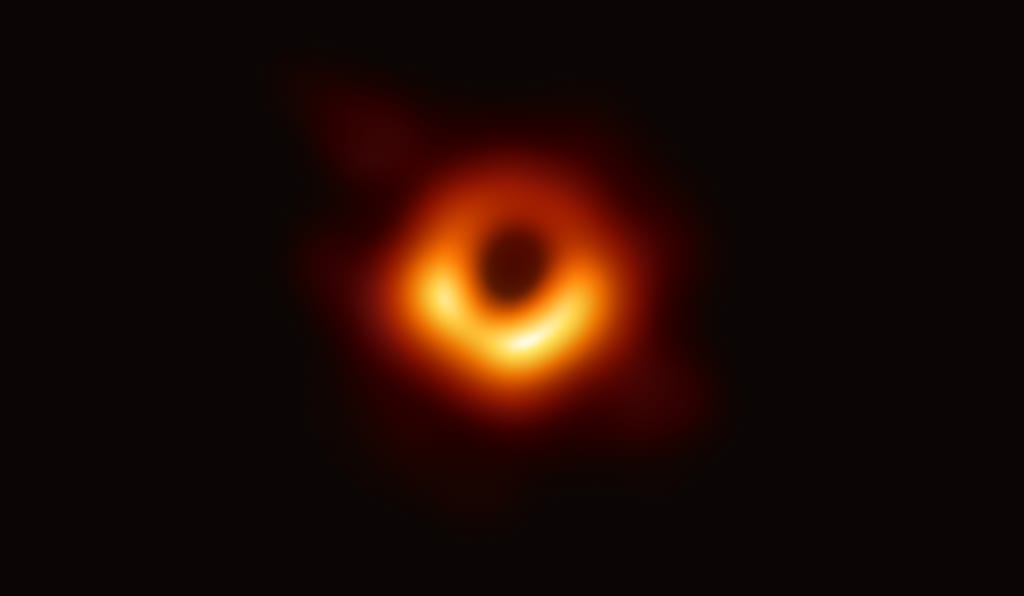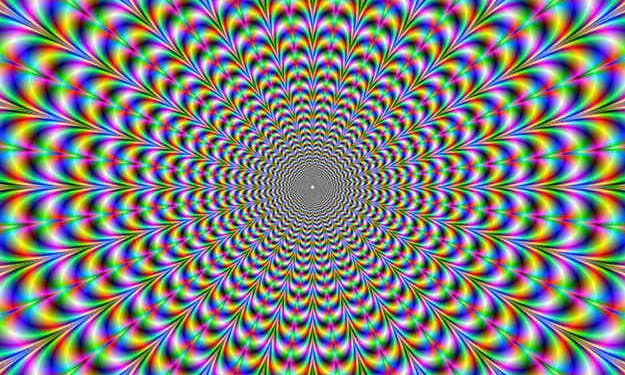The Black Hole
They are not what you think they are!

Black holes were unknown until the 20th century. They are regions in space with strong gravity that even light can't escape from. From the outside, we can't see what's inside a black hole. They are dark centers of gravity that consume everything in their path. The history of black holes is relatively short. 100 years ago, no one knew about them. Einstein's Theory of Relativity led to their discovery. The theory has two parts: the Special Theory of Relativity and the General Theory of Relativity. The Special Theory of Relativity, published by Einstein in 1905, explains how speed affects time. If you're in a fast spaceship, time will slow down relative to people on Earth. The word "relative" is important because you won't feel time slowing down in the spaceship. But when you return to Earth, you'll notice a difference in the flow of time. This is called Kinematic Time Dilation.
He developed it in 1915. More gravitational force equals slower time. It's called Gravitational Time Dilation. Interstellar depicted this well. One hour on Aqua Planet equals 7 years on Earth. This happened because of the planet's proximity to the black hole. Einstein used a space-time fabric analogy. The fabric bends due to mass, affecting objects and time. Gravitation affects everything, including light. Some objects have such high gravity that they're completely black. We can't see them because even light can't escape. These are Black Holes. Black holes were theoretical during Einstein's time. He knew they were possible, but didn't believe they existed. The term "Black Holes" didn't exist when he was alive.
Einstein's theory stated that light's speed limits gravity's influence. Gravity's force is not felt instantly everywhere; its upper limit is the speed of light. For example, if the sun disappeared, we would only know about it 8 minutes later on Earth because sunlight takes that long to reach us. According to Einstein, the gravitational impact of the sun's disappearance would also be felt 8 minutes later. After Einstein, scientists worked on the Theory of General Relativity and solved equations to prove the existence of black holes. By the 1960s, it was agreed that we could realistically see black holes one day. The term "Black Hole" was first used in 1964 and gained popularity in 1967 when physicist John Wheeler popularized it. However, the term is misleading as there is no actual hole in space.
Stars form black holes. Material is at the center of a black hole. Stars, including our Sun, have a continuous nuclear fusion reaction at their center. These reactions produce heat and light. Heat from the reactions creates an outward force. Gravity at the center of the star keeps it intact. Stars maintain equilibrium with outward forces from the reaction and inward forces from gravity. Reactions require fuel, like Hydrogen or Helium. Eventually, the fuel runs out. Without fuel, there are no outward forces. Gravity collapses the star on itself. This process takes a long time. The Sun's life expectancy is around 10 billion years. What happens next depends on the star's mass.
Stars go through stages in their life cycle. Small or average-sized stars become Red Giants. They can then become a planetary nebula or a White Dwarf. Massive stars become Red Super Giants. They eventually explode into a Super Nova. After the explosion, a tiny core remains. It can become a Neutron Star or a Black Hole, depending on its size. The mass of a star determines if it becomes a black hole when it collapses due to gravity.
The volume of a compressed star is extremely small. If our Sun were to turn into a black hole, its diameter would be only 50 km. It's hard to imagine the volume shrinking so much. However, our Sun will not become a black hole. Subrahmanyan Chandrasekhar, an Indian-American astrophysicist, proved this. He established the Chandrasekhar Limit, which states that the maximum mass of a White Dwarf can be 1.4 times the mass of our Sun. If it exceeds this limit, it will become either a Neutron Star or a Black Hole. Since our Sun is below this limit, it will become a White Dwarf, not a Black Hole.
Black holes exist for a reason. There are different types of black holes. The first type is the Stellar Black Hole. It is the most common type. These black holes are created by stars. There are estimated to be millions to billions of them in our galaxy. The second type is the Primordial Black Hole. They are very small but have a lot of mass. However, they are mostly theoretical and not well understood. The third type is the Supermassive Black Hole. These black holes are huge, with a mass greater than 1 million Suns. They are believed to be at the center of every major galaxy, including our Milky Way. The one in our galaxy is called Sagittarius A.
Scientists believe there may be a fourth type of black hole, called the Intermediate Black Hole. It would be between the sizes of Stellar and Supermassive black holes. However, there is no proof of its existence yet. The black hole is not like a big black ball that sucks everything in, as shown in the film Interstellar and photos. Instead, it has an orange-colored ring called the Accretion Disk, which is an important feature. Due to the strong gravitational pull, gaseous matter and debris revolve around the black hole. They become fire-like particles hotter than a million degrees Celsius. The closer they get, the faster they revolve and emit X-rays.
X-rays cannot be seen by human eyes. They are outside the visible light spectrum. We represent X-rays in orange-yellowish color for visualization purposes. The actual color of the disk would be closer to blue. In 2019, the first photo of a black hole was captured. It also used yellowish-orange color to represent the accretion disk. The real photo shows that particles on one side appear brighter than the other side. This is because particles spinning towards us appear brighter, while those spinning away from us appear dimmer. This phenomenon is known as the Doppler Beaming effect. By examining the real photo, we can interpret the direction of the spinning particles from this blurred image. The brighter area indicates particles coming towards us, while the dimmer area indicates particles moving away from us.
The accretion disk creates an optical illusion due to gravity. It appears to cover the top and bottom of the black hole because gravity bends the light. When viewed from the front, the area behind the disk is hidden, and the light from that area must move over the disk due to gravity's influence. From the top, black holes look like normal, round disks. This illusion is only seen from the sides. Inside the black hole, there is a Photonsphere, where gravity is so strong that light orbits the black hole. Photons, which make up light, start orbiting the black hole. In this area, it is theoretically possible to see the back of your head if you were to reach it alive, as the light forms a ring and travels in a circle.
The boundary of the black hole is called the Event Horizon. It is where everything becomes black because the gravity is so strong that even light cannot escape. If you fall into a black hole and cross the Event Horizon, there is no chance of escaping. In the movie Interstellar, the spacecraft falls into a black hole and reaches a five-dimensional space, but this is just imagination because we don't know what's inside the Event Horizon. The producers tried to be scientifically accurate but had to rely on imagination for the unknown.
The centre of a black hole is called Singularity. It is the region where space-time curvature is infinite. The heavier the object, the more space-time bends. In the case of a black hole, it bends infinitely. Gravity affects time, energy, and everything else. Time slows down infinitely with increased gravitational force. We don't know what happens if you go inside a black hole and try to come out. We can only theorize.
There are theories about black holes. One theory suggests that inside the event horizon, light reflects off of multiple points. This means things could be visible inside. We have seen a photo of a black hole, taken by the Event Horizon telescope. This photo proved their existence. If you fall into a black hole, you will disintegrate due to the gravitational force. But don't be scared of black holes. They don't suck up all matter and end the universe. In each galaxy, there is a supermassive black hole at the center. Planetary bodies and stars revolve around it, similar to our solar system. If you maintain a proper distance, you will be safe.
About the Creator
Atta ul Munim
I am Atta ul Munim, a writer who explores a wide range of genres including erotica, fiction, and other yet-to-be-discovered styles. Would you like to delve into the possibilities?
Enjoyed the story? Support the Creator.
Subscribe for free to receive all their stories in your feed. You could also pledge your support or give them a one-off tip, letting them know you appreciate their work.






Comments
There are no comments for this story
Be the first to respond and start the conversation.